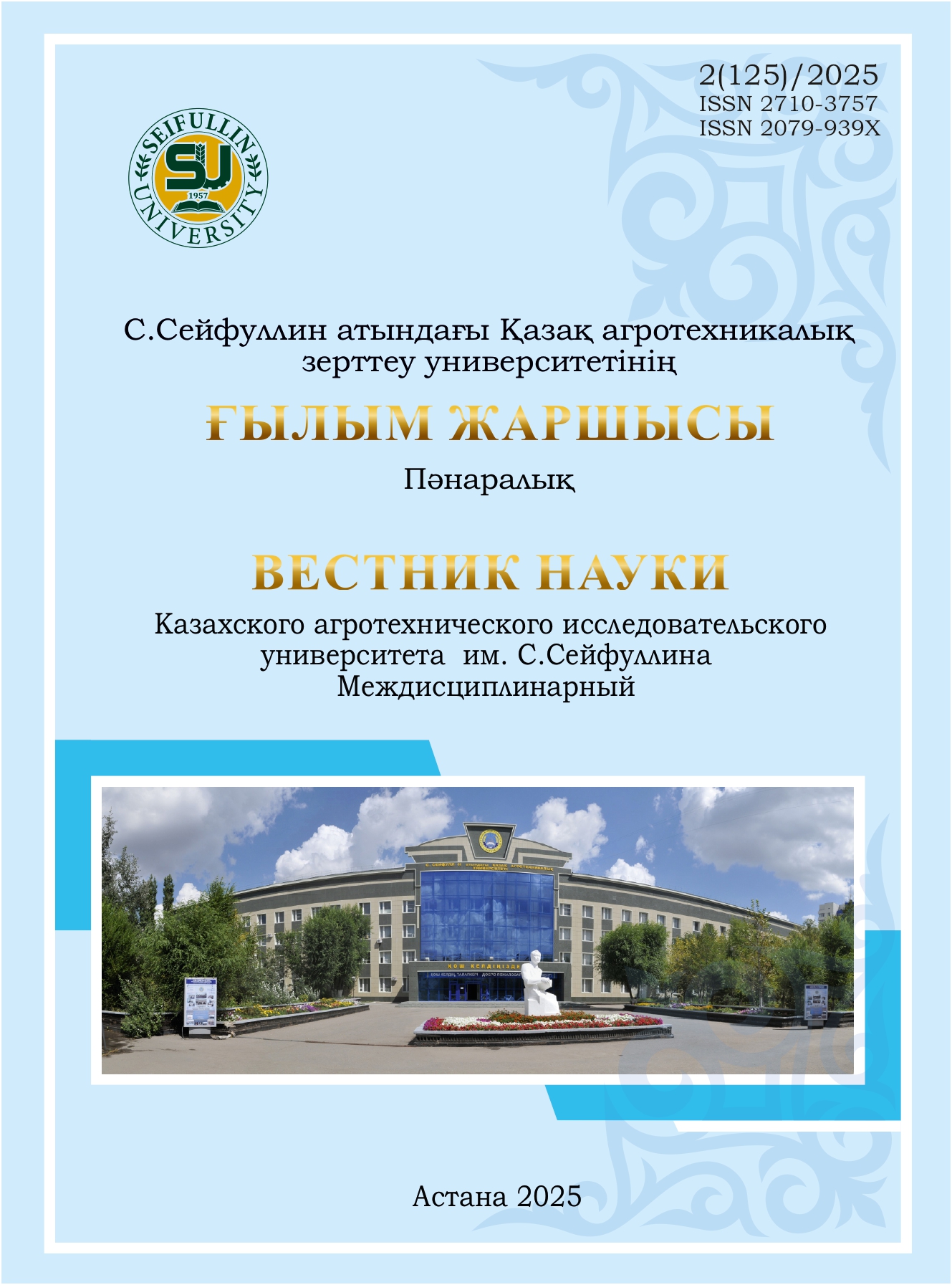Алматы облысы тау бөктері аймағы жағдайында күздік бидайдың өнімділігіне тұқым себу мерзімдері мен алғы дақылдардың әсері
##plugins.pubIds.doi.readerDisplayName##:
https://doi.org/10.51452/kazatu.2025.2(125).1895Ключевые слова:
winter wheat crop; sowing; overwintering; weeds; productivity.Аннотация
Алғышарттар мен мақсат. Алматы облысының тау бөктері аймағында күздік бидай дақылын тиімді өсіру - ауыл шаруашылығы өндірісінің өнімділігін тұрақты арттырудың маңызды шарты болып табылады. Аталған аймақтағы климаттық өзгерістер мен топырақтың ылғалдылық жағдайы күздік бидайдың өсуіне және өнімділігінің қалыптасуына айтарлықтай әсер етеді. Осыған орай зерттеудің мақсаты – күздік бидайдың әртүрлі тұқым себу мерзімдерінің өсіп-өнуіне және өнімділігіне алғы дақыл мен гидротермиялық жағдайлардың ықпалын ғылыми тұрғыда бағалау.
Материалдар мен әдістер. Зерттеу жұмыстары Алматы облысының тау бөктері аймағында орналасқан «Агроуниверситет» оқу-тәжірибелік шаруашылығында 2022-2024 жылдары жүргізілді. Тәжірибе барысында күздік бидай тұқымының себу мерзімдері мен алғы дақылдардың (көпжылдық шөп және қант қызылшасы) өнімділікке және өсіп-өнуіне тигізетін әсері зерттелді. Агротехникалық шаралар бірыңғай жүйеде сақталып, зерттеу нәтижелері стандартты әдістермен статистикалық талдау арқылы өңделді.
Нәтижелер. Зерттеу нәтижелері күздік бидайдың өсу қарқыны мен өнімділігіне тұқым себу мерзімдері мен алғы дақылдардың шешуші рөл атқаратынын көрсетті. Алғы дақылы көпжылдық шөп болған жағдайда 10 қазанға дейінгі тұқым себу мерзімі топырақтағы ылғал қоры мен жылу қосындысының оңтайлы болуына байланысты жоғары өнім алуға мүмкіндік берді. Қант қызылшасы алғы дақылы жағдайында тұқым себудің тиімді мерзімі қазан айының бірінші және екінші онкүндігі аралығында қалыптасты. Себу мерзімінің кешіктірілуі өсімдіктің өсу динамикасын бәсеңдетіп, өнімділікті төмендететіні анықталды.
Қорытынды. Алматы облысының тау бөктері аймағында күздік бидайдың тұрақты және жоғары өнімділігін амтамасыз ету үшін оның тұқымын себу мерзімін нақты анықтау – өндірістік тиімділіктің негізгі шарты болып табылады. Зерттеу барысында алынған нәтижелер агроклиматтық жағдайға бейімделген күздік бидай өсіру технологиясын жетілдіруге және фермерлік шаруашылықтарда өнімділікті арттыруға арналған ғылыми негізделген ұсынымдар жасауға мүмкіндік береді.

